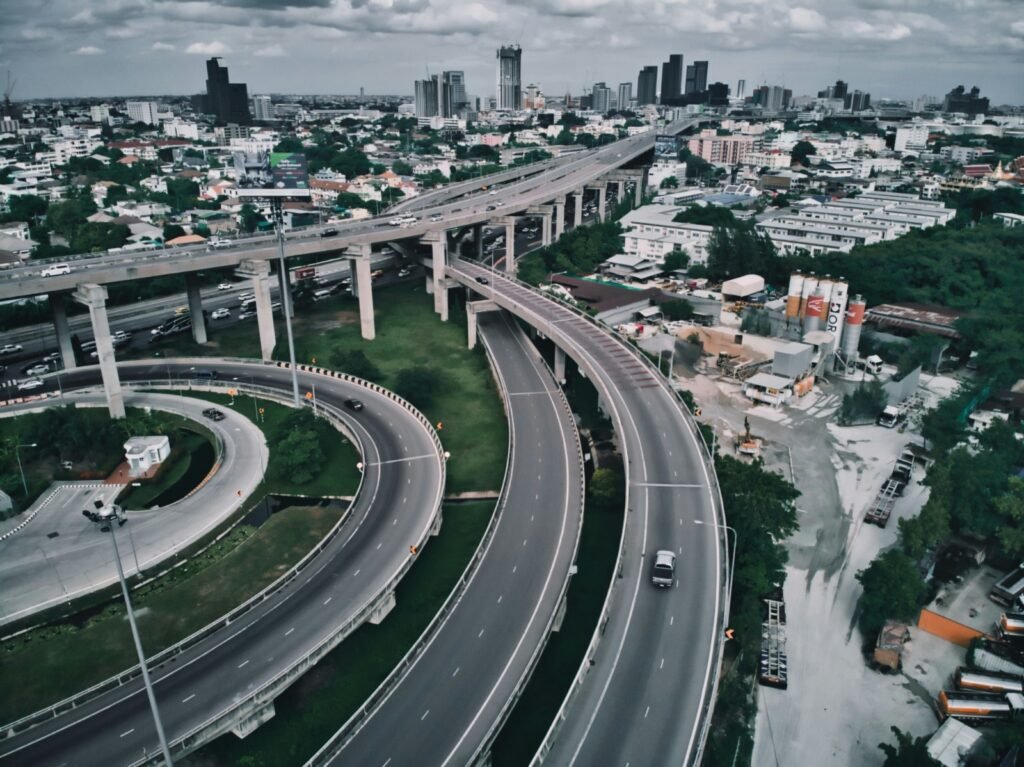Recent Posts
India Builds Over 3,600 km of High-Speed Corridors in Five Years: TN & AP Among Top Builders

India has built more than 3,660 km of high-speed corridors during the last five financial years, said the Minister for Road Transport and Highways Nitin Gadkari in the Lok Sabha on Sunday. It was “maintained” by roads and highways minister Nitin Gadkari in a written response in the Rajya Sabha, an overwhelming keenness of the government to enhance and upgrade road infrastructure.
The average pace of highway construction went up to 31 kilometres per day between FY20 and FY24 from 22 km per day in FY14–FY19. This acceleration, as per the Gadkari is due to planning, execution and smart policy changes.
Maharashtra again emerged as the best contributor with more than 9,300 km of national highways built around this time. Other leading states include Rajasthan (4,148 km), Uttar Pradesh (4,016 km), Madhya Pradesh (3,921 km), Andhra Pradesh (2,686 km), and Tamil Nadu (2,626 km).
Countrywide, more than 22,000 km of four-lane and above-configuration highways were built to increase the road capacity. Maharashtra was again way ahead with 3,140 km, followed by Uttar Pradesh (2,200 km), Madhya Pradesh (1,222 km), Odisha (1,122 km), Karnataka (1,088 km) and Tamil Nadu (1,030 km).
To sustain this rapid expansion, the government has propelled a series of initiatives:
- Corridor-based planning: Identification and fast-tracking of niche economic corridors.
- PM GatiShakti Integration: The adoption of integrated, data-driven planning through the National Master Plan.
- Innovative financing: enhanced budget allocations and PPP models along with Infrastructure Investment Trusts (InvITs)
- Quicker Clearances: Each project can leverage digitized land acquisition (Bhoomi Rashi) and environmental approvals (PARIVESH portal).
Enhanced Ecosystem For Execution: Support to indigenous contractors, reforms in dispute resolution, and enabling real-time monitoring with the use of drone monitoring and geographic information system-based tools.
Supporting the deployment of new technologies — for instance, the use of modern materials, smarter designs, and digital systems to enable new sustainable designs.
The growth of infrastructure is regarded as a vital facilitator of economic activity, and it is anticipated that the consequent connectivity improvements will cut logistics expenses and stimulate regional growth.
It is about doing roads differently- not just building more roads but about providing high-quality infrastructure where speed and sustainability are at the centre of it, as Gadkari pointed out.
- Bhoomi Rashi portal
- Buildwatchnews
- drone highway monitoring
- economic corridor planning
- four-lane highway expansion
- GatiShakti plan
- high-speed corridors India
- highway statistics FY24
- India highway construction
- India infrastructure growth
- India logistics cost
- InvIT roads India
- Maharashtra roads
- national highway construction data
- new highway technology
- NH development 2024
- Nitin Gadkari highway update
- Parivesh portal
- PM GatiShakti update
- PPP in highways
- regional connectivity India
- road construction speed India
- road development policy
- road infrastructure India
- state-wise highway construction
- sustainable road building
Recent Posts
Steel Consumption in India Projected to Grow 9–10%: Steel Secretary
September 25, 2025Categories
- Airport3
- AP37
- Apartments32
- Bengaluru131
- Budget 202521
- Cement113
- Chennai321
- Construction598
- CREDAI28
- Editors Pick42
- Equipment27
- Events11
- GST13
- Highways77
- Hotel1
- Housing114
- Hyderabad43
- Industrial243
- Infrastructure365
- Interiors15
- Iron Ore22
- Karnataka38
- Kerala26
- Land71
- Market Updates205
- Metal28
- Metro89
- Mining19
- MSME11
- News1,524
- NHAI54
- Paints34
- Properties41
- Puducherry8
- Real Estate477
- Road172
- Sand22
- Short News117
- SIPCOT3
- Steel Daily342
- Stocks6
- Tamil Nadu296
- Technology40
- Telangana29
- TIDCO2
- Trade5
- Trending News1,083
- Video2
Related Articles
Steel Consumption in India Projected to Grow 9–10%: Steel Secretary
India’s steel sector is set for 9–10% growth this year, supported by...
BySamrita JosephSeptember 25, 2025NGT Orders Halt on Construction Near Pallikaranai Marsh Until IMP is Finalised
The NGT has halted all construction near Pallikaranai Marshland until an Integrated...
BySamrita JosephSeptember 25, 2025Shyam Steel Enters Decorative Paints Market with Macaw Paints Launch in West Bengal
Shyam Steel enters the decorative paints market with Macaw Paints, launched in...
BySamrita JosephSeptember 24, 2025Vizhinjam–Navaikulam ORR: NHAI to Appoint Consultant for Tunnel Feasibility Study
NHAI will appoint a consultant to study tunnel feasibility along the Vizhinjam–Navaikulam...
BySamrita JosephSeptember 24, 2025















Leave a comment